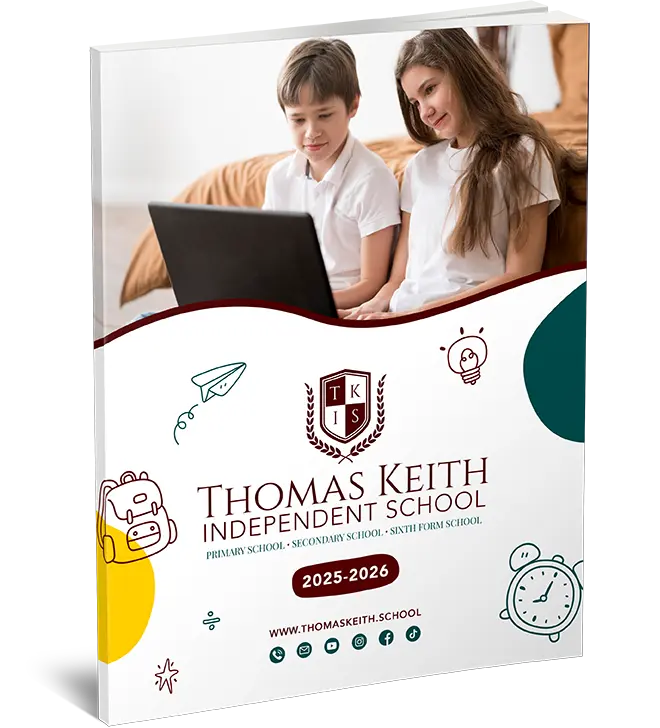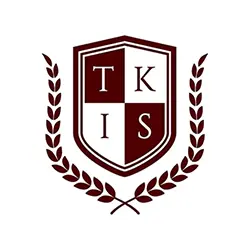Key Stage 3: A Comprehensive Overview
Key Stage 3 (KS3) is one of those pivotal times in the UK school system. It’s that stage between primary school, where students are just starting to get a grasp on formal learning, and Key Stage 4 (KS4), where they buckle down for GCSEs.
During KS3, students build on what they already know, dive deeper into new subjects, and start learning how to think more independently.
This article breaks down everything you need to know about KS3: what it is, who it’s for, what kids learn, and why it matters.
We’ll also spotlight how schools like Thomas Keith Independent School handle this important phase of learning.
What is Key Stage 3?
Key Stage 3, or KS3, is part of the UK’s national curriculum that covers Years 7 to 9.
It’s for students aged 11 to 14 and acts as the follow-up to Key Stage 2 (the last phase of primary school).
After KS3, students move on to Key Stage 4, where things get more serious with GCSE preparation.
Breaking Down KS3
KS3 is more than just a continuation of primary school. It’s when students start taking the basics they’ve learned and pushing them further. It’s also a time for students to develop skills that go beyond textbooks—things like problem-solving, critical thinking, and even social skills as they move through their early teenage years.

Who Does Key Stage 3 Include?
The Age Group
KS3 is designed for students between 11 and 14 years old. Here’s how it breaks down by school year:
- Year 7: Ages 11–12
- Year 8: Ages 12–13
- Year 9: Ages 13–14
What Do Students Learn in KS3?
The Curriculum at a Glance
The KS3 curriculum is broad, offering a little bit of everything to keep education well-rounded.
This phase sets kids up with knowledge across multiple areas, so when they reach KS4, they know what they’re good at and where they might want to focus. Subjects typically include:
- English: Developing stronger reading, writing, a
- nd communication skills.
- Maths: Building on arithmetic and moving into more complex concepts.
- Science: A mix of biology, chemistry, and physics basics.
- History and Geography: Exploring both UK and world events and learning about different places and cultures.
- Modern Foreign Languages: Often French, Spanish, or German.
- Art and Music: Creative outlets that help with expression and critical thinking.
- PE (Physical Education): Keeping kids active and learning teamwork.
- Computing: Teaching tech skills that are more important than ever.
Why the National Curriculum Matters
The national curriculum makes sure that all students in the UK are getting a similar education and learning the same core skills.
It keeps things consistent and ensures that kids everywhere are learning at the same standard.
Why is Key Stage 3 Such a Big Deal?
KS3 is important because it’s where students really start to grow academically and personally.
It’s the time to cement what they learned in primary school and start building on it.
KS3 prepares them for KS4 and their GCSEs, but it also teaches them how to think critically and work more independently. Plus, it’s a period of big social and personal development as kids move from being children to teenagers.

Transitioning from KS3 to KS4
Once KS3 wraps up, students move on to KS4, where the focus shifts to GCSEs. The foundation laid during KS3 is what helps them handle the bigger workload and the more in-depth study of KS4. It’s when they choose the subjects they’re going to specialise in, so having that broad knowledge from KS3 really pays off.
A Closer Look at Each Year in KS3
Year 7: The Start
Year 7 is when students step into the world of secondary school. It’s all new—different teachers for different subjects, a bigger school, and a more complex schedule. It’s a year of transition and adjustment.
Year 8: Building on the Basics
By Year 8, students are more settled into secondary school life. They start going deeper into their subjects and gain confidence in their abilities. It’s about strengthening what they learned in Year 7 and pushing a bit further.
Year 9: The Final Year of KS3
Year 9 wraps up KS3. It’s often seen as a year of preparation for KS4. Students start thinking more seriously about their future studies and which subjects they want to focus on for their GCSEs. It’s a time for exploration and making choices.
How KS3 and KS4 are Connected
The Link Between the Two
KS3 and KS4 are closely connected. KS3 gives students a taste of many different subjects, while KS4 is about focusing on specific areas in more detail and preparing for GCSE exams.
Age Groups for Each Stage
- KS3: Ages 11–14 (Years 7 to 9)
- KS4: Ages 14–16 (Years 10 and 11)
An Example: Thomas Keith Independent School
Thomas Keith Independent School is a great example of how KS3 can be taught effectively, even in an online setting.
They offer a curriculum that sticks to national standards but with the flexibility of remote learning.
It’s an excellent option for students who need a more adaptable learning environment without losing out on quality education.
Conclusion
Key Stage 3 is an essential part of the UK education system.
It’s the stepping stone between primary school and more specialised study in KS4.
Covering Years 7 to 9 and ages 11 to 14, KS3 helps students solidify their foundational knowledge and build skills that set them up for success, both academically and socially.
FAQs
What is Key Stage 3 (KS3)?KS3 is a part of the UK school curriculum for students aged 11 to 14, covering Years 7 to 9.
What age group is KS3 for?It’s for students aged 11 to 14.
Which years are in KS3?Year 7 (ages 11–12), Year 8 (ages 12–13), and Year 9 (ages 13–14).
What subjects do students study in KS3?They study English, Maths, Science, History, Geography, Modern Foreign Languages, Art, Music, PE, and Computing.
How is KS3 different from KS4?KS3 covers a range of subjects broadly, while KS4 involves choosing specific subjects to focus on for GCSEs.
Is Year 7 included in KS3?Yes, Year 7 is the start of Key Stage 3.
.




